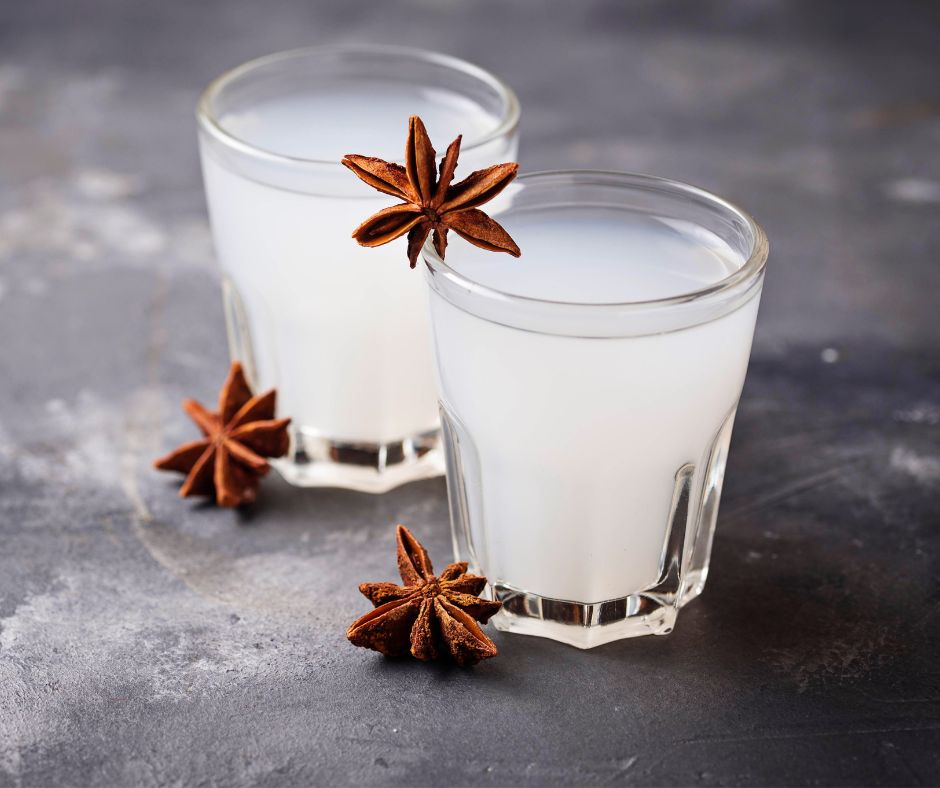
Arak Odyssey: Unveiling the Epic Tale of a Culinary Legend
Arak, the anise-flavored alcoholic libation, boasts an extensive and captivating history that stretches across centuries and continents. From its ancient origins to its contemporary prominence, the tale of Arak production weaves cultural legacies, methodologies, and flavors into a captivating narrative.
Join us on a fascinating expedition as we delve into the foundations of Arak, particularly its Lebanese legacy. Discover the intricate elements at play, from the constituents employed to the grape varieties integrated, and witness the meticulous artistry behind the creation of this beloved elixir.
As you raise your glass filled with Arak, take a moment to relish the culmination of generations of expertise and tradition that infuse each sip with a rich heritage. Whether in Lebanon or within Kultunest, our appreciation for this spirit is celebrated as we fuse it with water and ice to craft a harmonious fusion of flavors.
Ancient Beginnings & Cultural Roots
The history of arak-making can be traced back to the Middle East and Eastern Mediterranean lands. The drink's earliest origins lie in the cradle of civilization, where ancient civilizations like the Phoenicians, Egyptians, and Greeks experimented with distillation techniques. The anise-infused libation held a special place in their rituals, celebrations, and daily lives, symbolizing the art of distillation and the convergence of cultures along ancient trade routes.
Arak's journey through time saw it evolve from its early iterations into the refined spirit we know today. Early distillation methods involved rudimentary pot stills and traditional techniques passed down through generations. Over time, the craft of arak making spread to various cultures, each adding their unique twists. This led to distinct regional variations, each with its flavor profile and production techniques.
Arak Craftmanship in Lebanon
Lebanon, rich in cultural heritage and historical depth, occupies a significant role in arak production. The craft of concocting this anise-infused elixir has seamlessly woven itself into Lebanon's legacy for generations, shaping its cultural identity and earning it a reputation as a culinary haven.
Arak's lineage in Lebanon stretches back centuries, tracing its roots to the crossroads of ancient civilizations. The Phoenicians, known for their adept navigation and trading prowess, are credited with pioneering the refinement of arak-making techniques in the region. Leveraging their maritime expertise, they sourced premium ingredients and spices, laying the groundwork for Lebanon's enduring Arak tradition.
A hallmark of Arak production in Lebanon lies in incorporating distinct grape varieties. Grape-based arak, known as "arraq bi-zebib," involves the infusion of grape spirits, imparting a unique character to the final product. Varieties such as Obeidi and Merwah are favored for their harmonious blend of acidity and flavors complementing the anise infusion.
Within Lebanon, various arak variations await, each distinguished by its provenance, flavor nuances, and crafting techniques. Some are meticulously aged, gaining complexity from oak barrels, while others encapsulate the pure essence of anise. Prominent Lebanese arak varieties from regions like Batroun and Zahle present their own interpretations of this treasured spirit.
Today, Lebanon's arak-making heritage flourishes as a testament to its enduring ties to history. Amid the integration of contemporary methods and innovations, the core of Lebanese arak remains steadfastly anchored in its historical origins. For visitors and connoisseurs exploring Lebanon's vibrant culinary scene, indulging in a glass of meticulously crafted arak becomes an immersive journey into the nation's narrative.

The Intricate Arak Making Process
Crafting arak entails a meticulous distillation process that elevates a humble amalgamation of components into a sophisticated spirit. This journey encompasses several pivotal phases: fermentation, distillation, and the distinctive louche stage, where the distillate is diluted with water, resulting in the signature cloudy appearance that defines Arak.
The process initiates with a precise curation and preparation of ingredients. Central to this is anise, the primary element infusing arak with its unique aroma and flavor. Other botanicals and herbs might also be meticulously chosen and incorporated depending on regional nuances and specific recipes. The distiller's finesse in combining these ingredients significantly shapes the end product, marrying expertise with raw materials.
Grape spirits play a pivotal role in select renditions of Arak, notably in Lebanon and specific Middle Eastern locales. Grapes bestow an unparalleled layer to Arak's flavor spectrum, heightening its complexity. These spirits are derived from specific grape varieties and add a nuanced facet to the final outcome. Often acquired through the distillation of wine, these grape spirits wield a considerable influence over Arak's taste and scent.
At each juncture of the fermentation and distillation process, an indelible mark is imprinted on the ultimate arak product – its aroma, taste, and character coalesce in a symphony of craftsmanship. The distiller's mastery lies in navigating these stages, honoring tradition while embracing innovation.
In specific iterations and under varying producers, Arak might undergo maturation within wooden barrels for a designated period. This aging imparts an extra layer of intricacy and profundity to the flavor profile, harmonizing tradition and evolution.
